Glue formation in Reverse Osmosis Process..!
#membraneautopsy
CETP (common Effluent Treatment Plant) located in one of the well known textile industry zone, has RO Membrane system for treated water recycling. In, comparatively, shorter span of two years, management has to replace all the membranes forcefully due to deterioration of product quality, quantity and rise in unscheduled cleaning frequency.
Deterioration of product quantity was by 35% and change in quality was also quite significant.
Before replacement of membranes, CETP management taken a call to perform membrane autopsy to diagnose the reason of membrane failure and contacted.
Based on our recommendation, they have selected the RO membrane for autopsy and sent it to us with recommended packing. We studied this case and came up with very interesting facts.
So, let's see the case and it's findings.
The effluent treatment flow diagram is as follows :
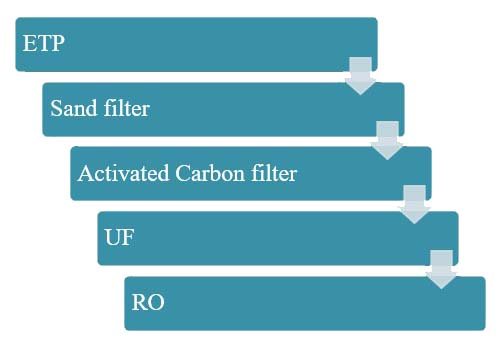
Chemical used for Effluent water treatment plant :
1. Ferric Chloride
Chemical used for RO feed treatment :
1. Non-phosphate base antiscalant
2. Non-oxidising biocide
3. Chlorination
4. SMBS
All these chemicals were common and standard chemicals which are available in market.
After receipt of membrane while carrying out autopsy, we came up with very valuable observations and findings which are listed below :
1. Evidence of panic and harsh cleaning was observed.
2. Evidence of back pressure from product side was observed.
3. Membrane was delaminated.
4. Reject spacer was partially choked.
5. Two membrane leaves with reject spacer, were stuck together.
6. Some sticky or oily or glue like black coloured substance was observed on membrane.
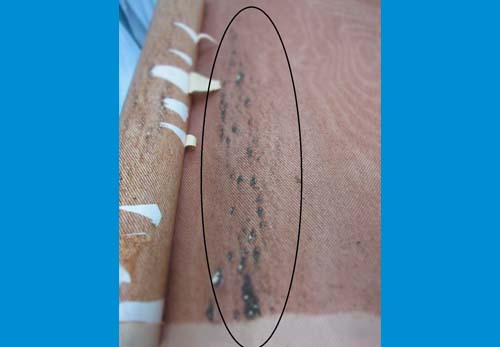
Reject Carrier stuck to membrane sheet
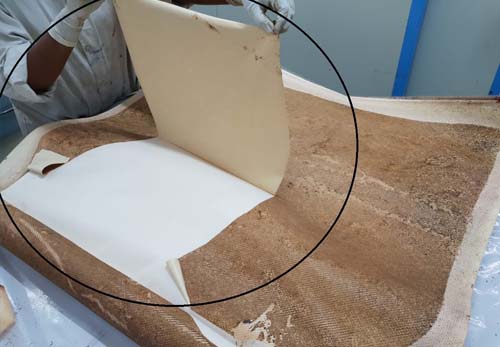
Delamination observed
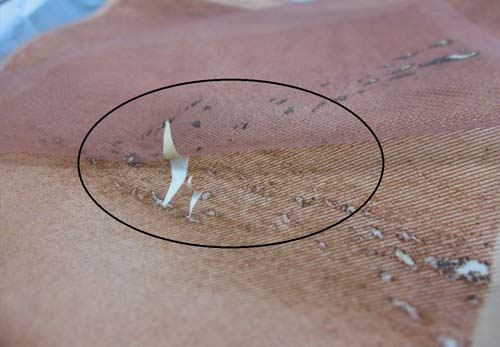
Reject Carrier stuck to membrane sheet
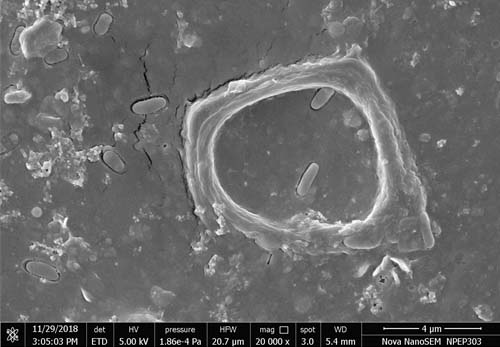
SEM
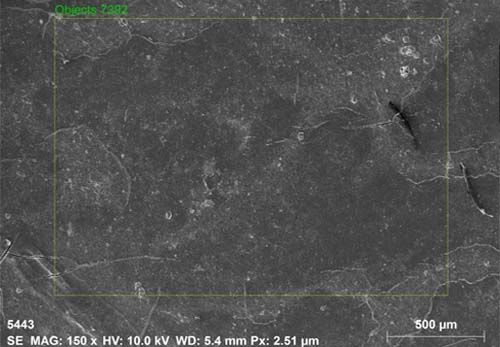
SEM
Some of our analytical findings and interpretation of foulants deposited on membrane leaf are as follows:
1. In chemical analysis calcium deposition was prominently observed followed by iron and silica. Apart from this halogen group, alcohol, alkyl halides and hydrocarbons were found.
2. Adequate amount of microbial deposition was observed.
3. Fujiwara test test was positive at various locations.
4. Uncontrolled dosage of chlorine and SMBS has oxidised the membrane.
5. Uncontrolled dosage of ferric chloride at ETP has created irreversible damage to membrane.
We were suprised to observe sticky or oily or glue like substance on membrane sheet which was a unexpected experience to us and was a challenge to investigate it. After a deep and very time consuming investigation, we could understand that alkene has reacted with some of the halogen group and formed sticky or oily or glue like substance. Considering the quantity of that particular substance on membrane, contamination of alkyl halides in the feed water could be few ppm or ppb also. But, that minute contamination has damaged membrane completely.